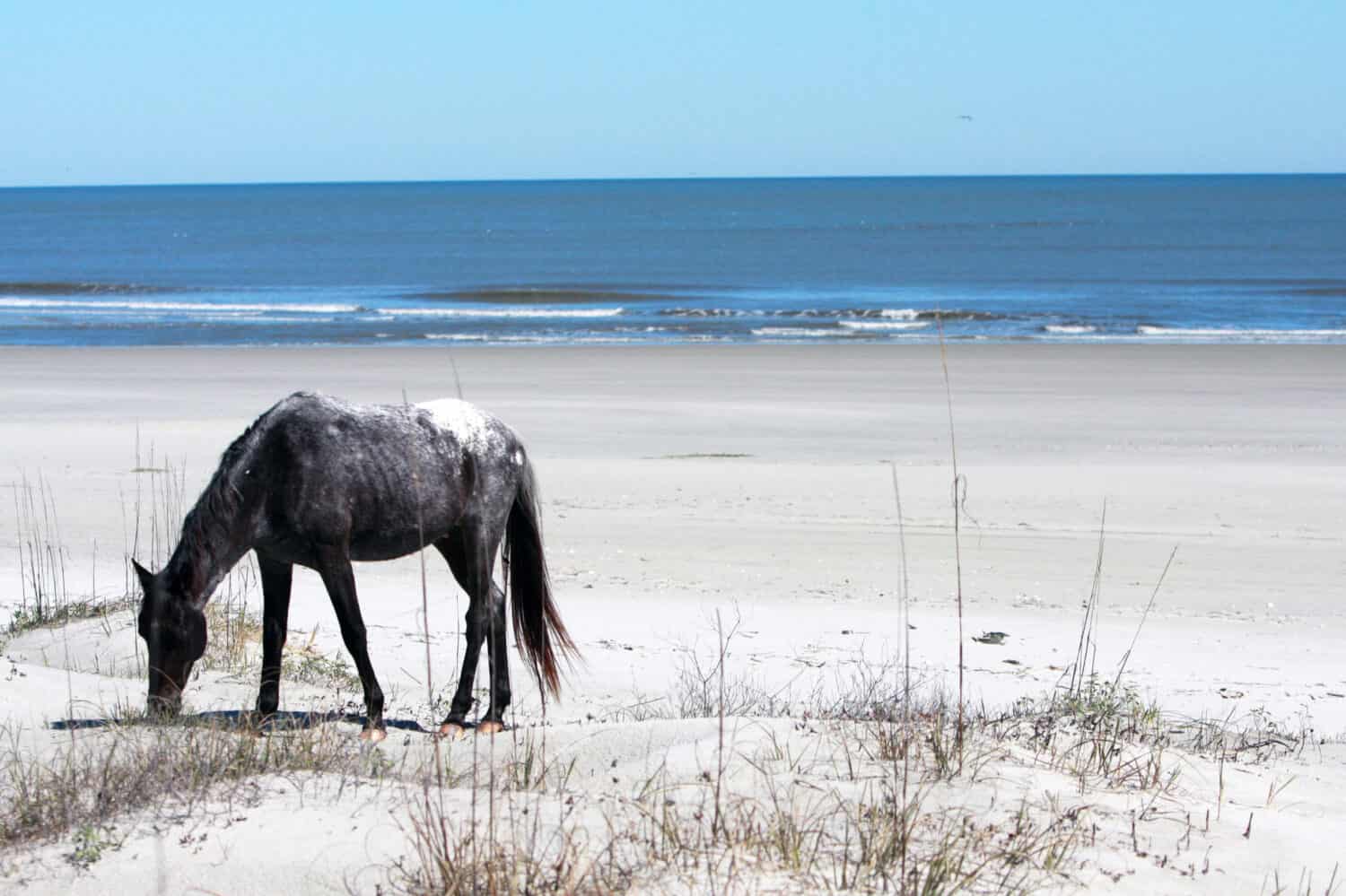Cumberland Island, Georgia is one of the nation’s treasured national parks and is the largest island within the state. One thing that sets it apart from the other locations within the National Park System is the feral horses. While these magnificent creatures draw a large crowd, there are plenty of other species of animals, birds, and plants as well.
The island offers extensive ecosystems that support a plethora of wildlife. Throughout the 18 miles of undeveloped beachfront, shaded by 300-year-old live oaks with Spanish moss, there are over 36,000 acres of land. Let’s take a look at all the varieties of nature within Cumberland Island.
Animals
With more than 30 mammals and 55 reptiles and amphibians roaming the island, seeing your favorite species in the wild is likely. Here’s a look at some of the more popular animals, birds, and plants of Cumberland Island.
Feral Horses

Wild horses on Cumberland Island, GA are a major draw to the island.
©flashbacknyc/Shutterstock.com
Probably the biggest draw to the island, the feral horses do tend to steal the show. The non-native herd are close relatives of Tennessee Walkers, American Quarter Horses, Paso Fino, and Arabians. In 1991, the University of Georgia and the University of Kentucky conducted genetic studies, which provided the results.
The NPS conducts annual population surveys, which began in 2003. These surveys have provided head counts that range from 120 to 148 horses each year. Completely self-sufficient, these animals receive no food or water assistance, population control, or veterinary care.
Sea Turtles on Cumberland Island

Sea Turtles range in size, with the Loggerhead being the largest, and the most common to the island.
©marcinhajdasz/iStock via Getty Images
Each year seems to bring more sea turtles to the shores of Cumberland Island. The number of nests
in 2019 broke the record, with a total of 1018 nests documented. The majority of these nests belonged to the loggerhead, while only 11 were green sea turtle nests. Cumberland Island is reported to consistently have the most sea turtle nests of all the other beaches within Georgia.
The island’s 18-mile undeveloped beach is quite important to the loggerhead sea turtle nesting areas. Annually, this beach accounts for 25 to 30 percent of the statewide nesting total.
Nearby Jekyll Island is another island popular with sea turtles. In addition to the beaches, visitors to the island can see them being taken care of at the island’s sea turtle rehab center.
Armadillos
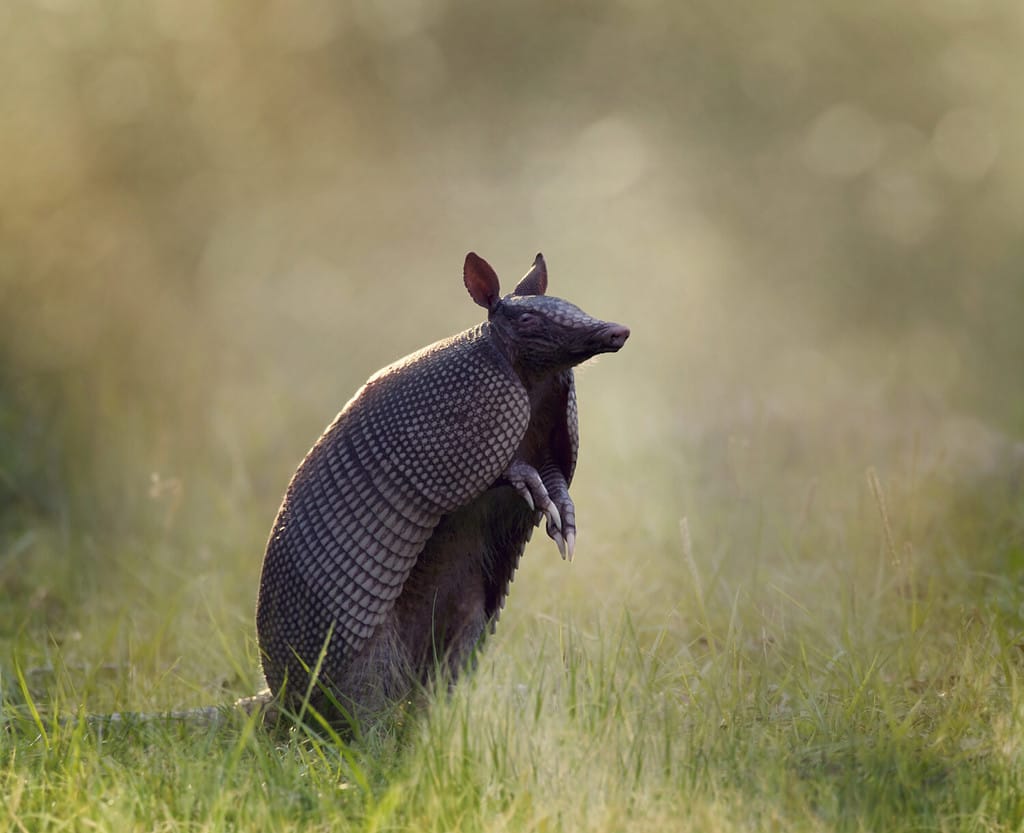
One of the easiest animals on Cumberland Island to spot year-round, as the nine-banded
armadillo
doesn’t hibernate.
©Svetlana Foote/Shutterstock.com
While there are 20 species of armadillos, the only one found on Cumberland Island is the nine-banded armadillo. These armadillos, which can have anywhere from seven and eleven bands, are about the size of a house cat and can weigh between seven to seventeen pounds. These armadillos are commonly seen throughout the island, mostly while foraging for food. It thrives within the maritime forest, eating a diet of grubs, beetles, ants, beetles and grasshoppers.
The armadillo is one of Cumberland Island’s easily spotted residents. In the cooler months, armadillos can be spotted often during the daytime. And, since they don’t hibernate, they are commonly spotted during the winter months as well.
Armadillos face predators on the island, such as bobcats, alligators, coyotes, and birds of prey. Furthermore, armadillo pups are most vulnerable because their bony armor hasn’t fully developed yet.
Alligators on Cumberland Island
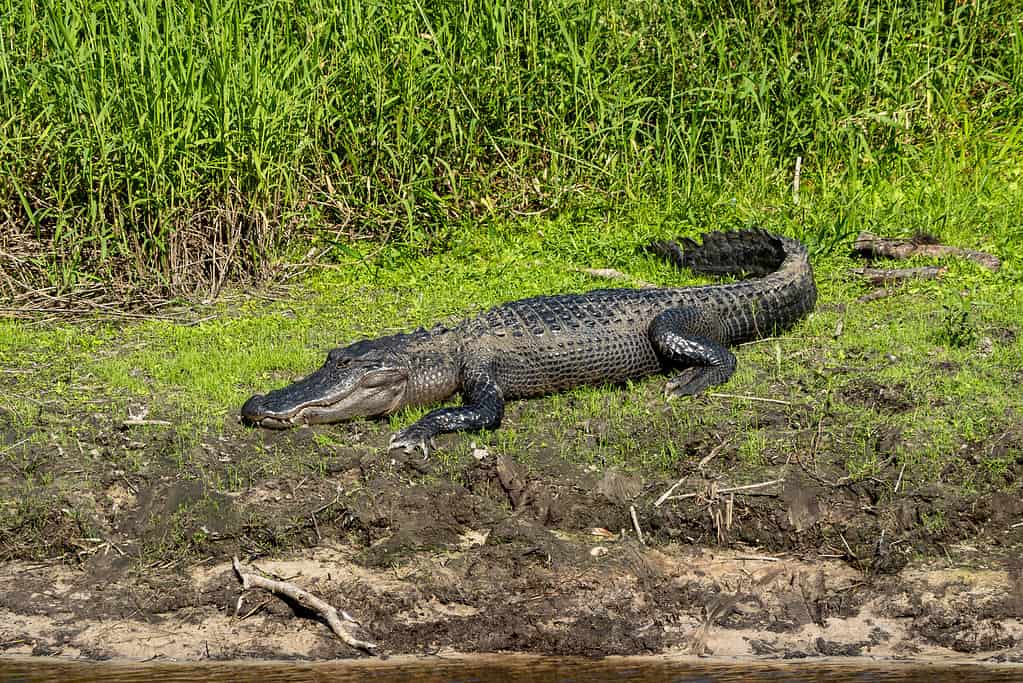
American
alligators
love to bask in the hot Georgia sun, even during winter months.
©FlagtailsPhotography/iStock via Getty Images
When they are grown, American alligators are at the top of the food chain among all the animals on Cumberland Island, However, American alligator eggs can be a meal for snakes, hogs, and raccoons. Young alligators can be hunted by island prey, such as raccoons and wading birds. Furthermore, larger alligators hunt younger and smaller gators.
The best place to view these giant lizards is the swampy areas of the island. American alligators can be seen along the marsh edges as well as the freshwater wetlands. They prefer freshwater but can be also seen in the salt marsh. Rarely seen in the Atlantic shoreline, a gator crawling out of the waves onto the beach has happened once or twice.
Birds
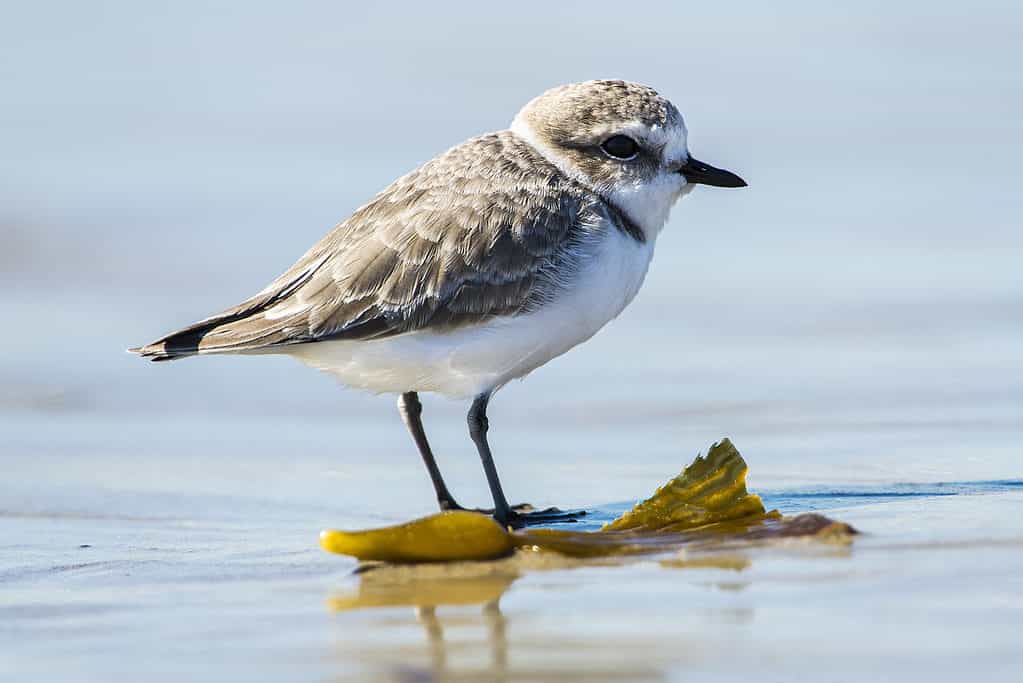
Snowy Plover is a species commonly seen on Cumberland Island.
©iStock.com/drferry
With over 300 species of birds throughout Cumberland Island, spotting a favorite shouldn’t be challenging. A few examples of birds on the island include peregrine falcons, red knots, black skimmers, Wilson’s plover, snowy plover, painted buntings, oystercatchers, and warblers.
Peregrine falcons are best seen during fall migration, while painted buntings are visible the most during the summer season. Spring and fall migration cycles are the best times to see warblers.
In general, a good place to catch views of the island’s birds includes the borders of the four different ecosystems: Maritime forest, saltwater marsh, interdune meadows, and the undeveloped beach.
As a guide, gull-like birds are on the island all four seasons, as are wading birds and songbirds. Shorebirds are most common during the fall, while waterfowl can usually only be spotted during the winter months.
Plants
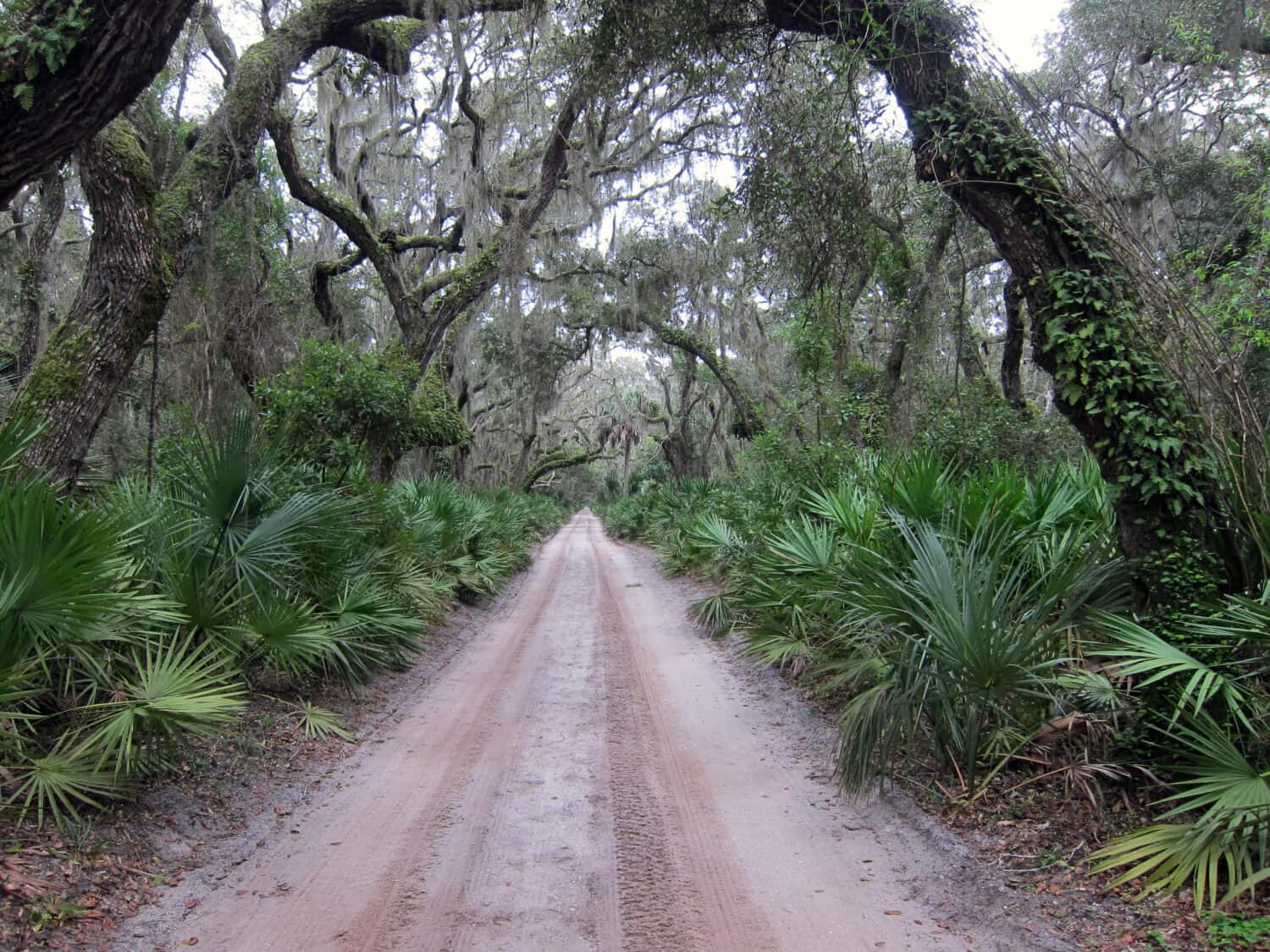
One of the many paths with canopies, displaying a variety of trees and shrubs.
©Nichole Casebolt/Shutterstock.com
Spread between the distinct plant communities, such as the dune system, salt marsh, and maritime forest, there are over 500 vascular plant species on Cumberland Island.
The Sand Dunes

The dunes on Cumberland Island offer a variety of plant life.
©jctabb/Shutterstock.com
On the sandy dunes are railroad vine and beach croton, along with sea oats. Visitors can often see feral horses grazing on railroad vines, beach croton, and sea oats.
Maritime Forest
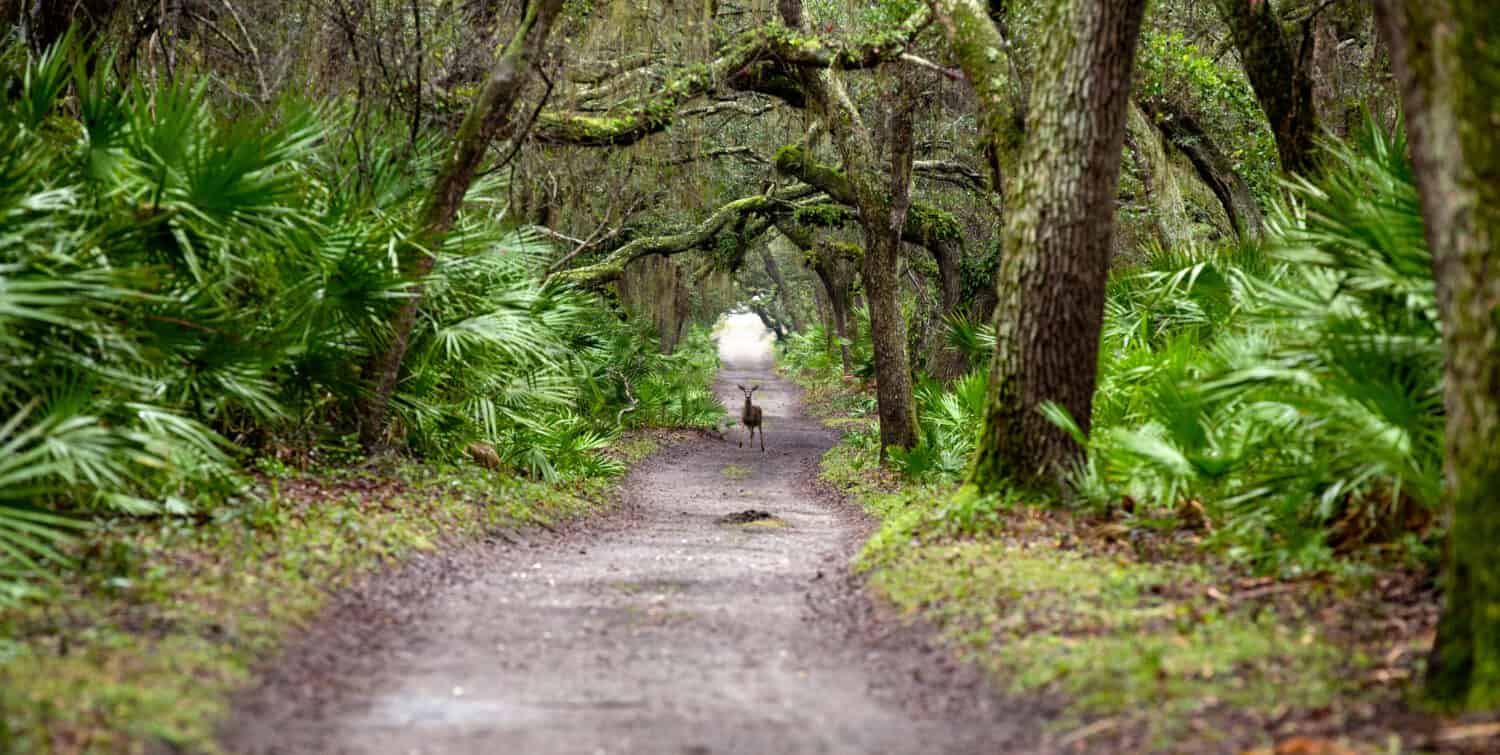
If a white-tailed deer comes into view, it won’t stay long! Deer dart into the protection of the understory.
©Stacy Funderburke/Shutterstock.com
The forests have three levels: the canopy, the understory, and the ground floor. Each one has individual strengths, while all three work together for plants and animals.
Canopy
The live oak tree is dominant within the canopy, with Spanish moss-covered branches, as well as resurrection ferns and a variety of fungi. The live oak provides a habitat for squirrels, insects, and migratory birds.
Understory
Plants within the understory connect to the canopy. Mostly, vines such as grapevine, crossvine, poison ivy, and Virginia Creeper are connectors. More shade-tolerant plants are found within this level of the maritime forest, such as saw palmetto, sparkleberry, and hollies. These are a great source of food for white-tailed deer and a variety of island birds.
Ground floor
Within the ground floor, While there is no ‘life’ within this section, it is important due to its recycling capabilities. By offering limbs and dead wood as meals to insects and wood borers, and with mold and bacteria breaking down leaves and dead animals, the nutrients are returned to the soil. Plants benefit from this, as well, as the sandy soil of the forest doesn’t maintain nutrients well.
Salt Marsh
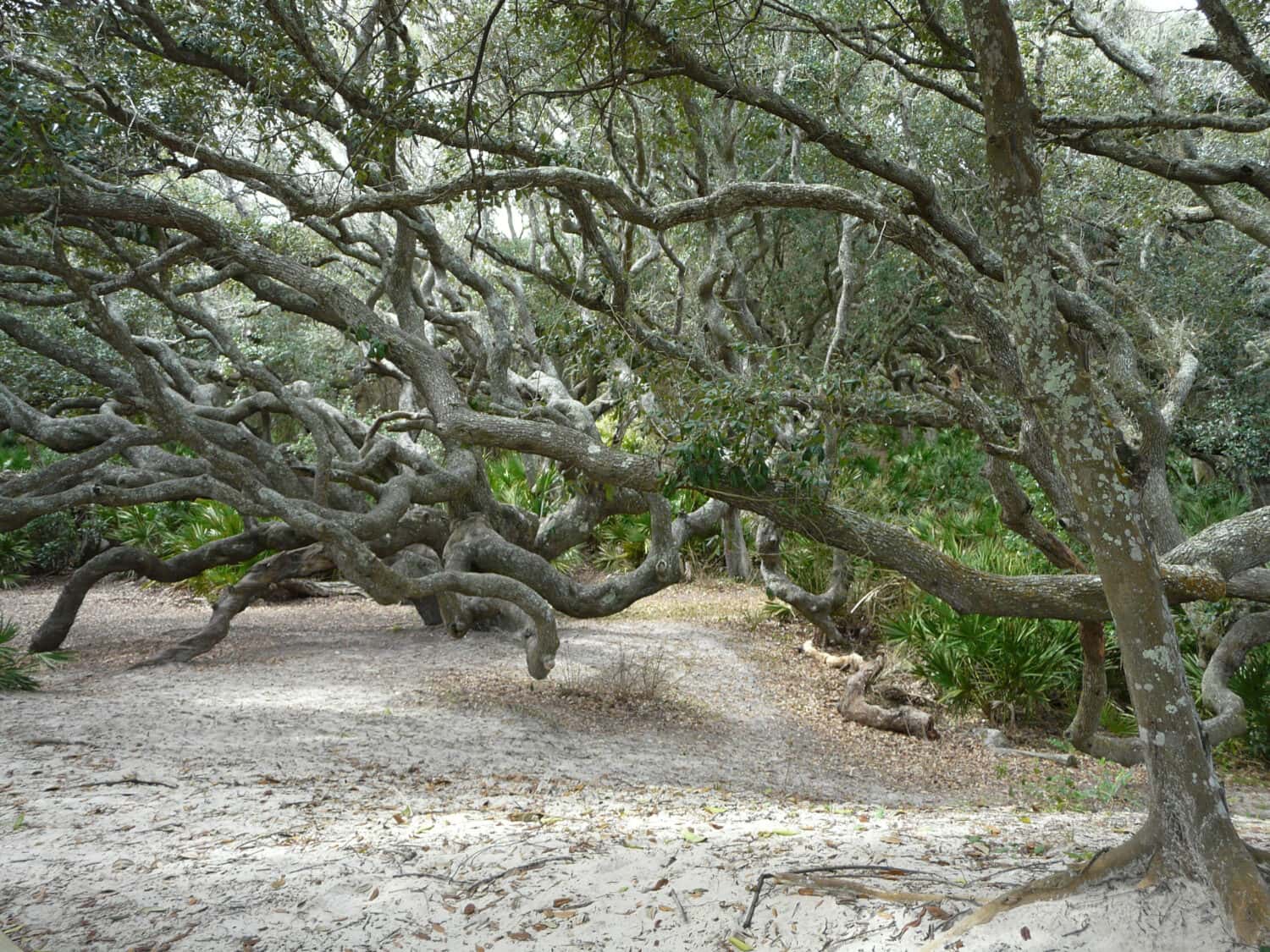
A clear view of the border of the dunes and salt marsh on Cumberland Island.
©romarti/Shutterstock.com
Cumberland Island includes over 9,000 acres of salt marsh, which is broken into two separate zones, the high and the low marsh.
The high marsh has sandy soil and a high variety of plants, including glasswort, needle rush, sea oxeye, and saltwort. The high marsh is only covered with water at the highest tides, which are during a full or new moon, and stormy weather.
The low marsh stays flooded with salt water each day for six to eight hours. One type of plant is uniquely adapted to survive the daily flooding and that is the smooth cordgrass.
Few animals live in the salt marsh, while many are there searching for food or shelter. Crabs and shrimp enter the marsh as plankton and leave when adulthood is reached. Some organisms make their permanent home here, such as oysters and periwinkle snails.
Ways to Explore and Enjoy the Island
While some take the water taxi to the island in the morning and return that evening, others opt to camp. There are places to camp very near to the drop-off site, with the open to really ‘rough it’ deeper into the island. In total, there are five campgrounds.
Another option is to spend the night at the island’s only hotel: the Greyfield Inn. An estate built in 1900 on 200 acres, the hotel allows visitors to spend the night and have more time to explore all the beauty and wonder that is Cumberland Island.
Thank you for reading! Have some feedback for us? Contact the AZ Animals editorial team.

